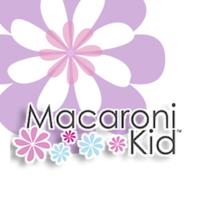Children are especially vulnerable to adverse reactions from the foods they eat, including common allergens such as milk, soy, peanut butter, eggs, shellfish and wheat. If your child is allergic to any of these foods, you'll need to monitor his diet carefully, since many common processed foods contain at least trace amounts of one of these ingredients.
Avoiding Common Food Allergens
Avoiding Common Food Allergens
Milk
Keep your milk-allergic child away from foods like yogurt, butter cheese, curds, buttermilk, cream cheese, sour cream and items that contain artificial butter flavoring. Steer clear of puddings, creamed or scalloped foods, white sauces, custards, creamers and malted food items, among others. Before purchasing processed food items, check the label to make sure they don't contain lactalbumin, lactalbumin phosphates, casein, sodium caseinate, lactoglobulin or lactose. All of these are made with lactose powders and can be harmful to your child.
Instead, purchase non-dairy versions of margarines, ice creams, cheese and yogurt, and give her soy, almond, rice or goat's milk in place of milk. Calcium-fortified orange juice is a good way to provide your child with the necessary calcium for her diet, but don't give her too much at one time, as all fruit juices have a high sugar content.
Soy
Soy and soy products are commonly found in many processed foods. If your child has a soy allergy, you should avoid sauces like miso, tamari and soy sauce, as well as tempeh and tofu. Read the ingredient list before purchasing vegetable broths and sausages or deli meats. Avoid products that list any of the following ingredients: vegetable starch or gum, textured vegetable protein, soy protein, hydrolyzed soy or plant protein, natural and artificial flavorings. These may be found in crackers, baked goods, formula, soups and sauces, in addition to other grocery items.
Egg
Pay close attention to the ingredient listings in many processed foods, including creams, candies, breaded foods, cakes, cookies, pies, creamed foods, custards, frostings, egg noodles, doughnuts, sauces, mayonnaise, ice cream, battered fish, chicken or fish, marshmallows, muffins, meringue, pudding, pretzels, fat substitutes and waffles. When reading ingredient lists on packaging, also look for things like phosvitin, globulin, livetin, albumin, ovalbumin, ovomucin, ovomucoid and apovitellenin. All of these things are derived from or contain eggs.
Shellfish
Even if you are vigilant about keeping your allergic child away from shellfish, you may find that he receives inadvertent exposure to things like shrimp, mussels, clams, lobster, sea urchin and abalone when ordering out in restaurants. Chefs frequently use the same oil for cooking shellfish and other kinds of fish or fries, so it's a good idea to ask that the chef uses fresh oil when cooking your toddler's fried meal.
Nuts
If your child is allergic to nuts, watch our for things like peanut oil, peanut butter, marzipan, nougat, egg rolls, candies, pastries and any foreign foods that may contain nuts. Even foods that are processed in the same factory as peanuts may contain trace amounts of nuts that could cause a serious or fatal allergic reaction in your child, so extra caution must be taken to avoid exposure to these foods.
Take special care that your child's school administrators know about his nut allergies, and whenever parties or special food occasions are planned, send along something equally appetizing so that he may enjoy a treat, as well. Be sure that no one eats nuts or nut products at the same table where he is sitting, and alert the waiter to the allergy when you are eating in a restaurant so that he can make sure no nut products pass by your area. For people with serious nut allergies, even the aroma of nuts is enough to cause illness. Look for hydrolyzed plant protein or hydrolyzed vegetable protein when checking the ingredient lists of foods, as both of these contain nuts.
Wheat
The wheat-allergic child will face a lifetime of dietary challenges, as wheat and/or gluten are in just about everything! Look out for gluten, gelatinized starch, hydrolyzed vegetable protein, vital gluten, wheat bran, wheat germ, wheat gluten, vegetable gum and vegetable starch on ingredient lists of things you plan to buy. Avoid starches, modified starches, wheat starch and wheat malts, durum, bulgar, graham flour, high gluten flour, high protein powder, bran and farina, all of which contain wheat. Foods containing wheat include soy sauce, salad dressings, baked goods, bread crumbs, crackers, spelt, pasta, couscous, acker meal and most cereals. The good news for parents of wheat or gluten-allergic children is that a wide variety of gluten-free alternatives to wheat products are now available at most grocery stores.


